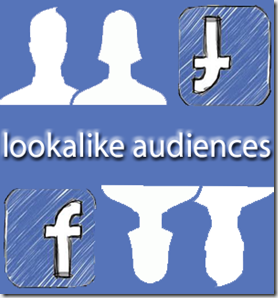“Mirror, mirror on the wall…”
While Facebook may not be answering “…who is the fairest of them all,” its new Lookalike Audience targeting aims to help marketers answer the question of who “mirrors” the existing target audience.
Just a couple of weeks ago Facebook announced that it is now offering Lookalike Audience targeting. As you most likely know, lookalike models can be used to build larger audiences from smaller audience segments to create scale for advertisers at a premium price. Agencies and brands have been testing and successfully using lookalike modeling across networks for quite some time, but this is a new offering available on Facebook.
Taking a look back before looking ahead: Custom Audience database
In the fall of 2012, Facebook released its Custom Audience database. This allows advertisers to use existing information that they have compiled on their customers — such as email addresses or phone numbers — to match to the user’s profile on Facebook. The new lookalike modeling takes the Custom Audience database to the next level by allowing advertisers to reach people who “look like” their Custom Audience database.
Lookalike Audience targeting on and off of Facebook
If we take a step back and look at how we have collected the data to use for lookalike modeling outside of Facebook, it is usually a combination of conversion data mixed with behavioral data. This combination allows advertisers to identify the consumer and what they were doing online before converting to the brand’s site.
The difference with Facebook lookalike targeting is that the attributes that qualify the person to be a lookalike will be the “likes” and interests that they have stated in their profile versus actual behaviors they have shown online. If Facebook released the “likes” and interests being used to build this lookalike model, this would be extremely valuable information to advertisers to help build out targeting models across multiple channels, but this is currently not the case. Facebook will be conducting this lookalike modeling behind the scenes, and the advertiser will not be able to see what classifies the users as a lookalike.
What’s the verdict?
It is important to keep in mind that a person may show on Facebook that they “like” BMW and The Four Seasons Hotels, but if you look at that same person’s behavioral data, you would see that it indicates that they have spent time shopping online for Toyota and Best Western hotels. Case in point, just because they “like” something on Facebook doesn’t necessarily mean they are in the market to buy it.
Keeping this in mind, we hope that Facebook will match many profile points to develop a precise lookalike model that will shape a target audience accurately. If this is the case, then the lookalike targeting on Facebook would be worth testing in addition to lookalike modeling outside of Facebook.
This article originally appeared in iMedia Connection on April 1, 2013.


